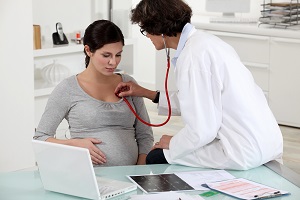 In October 2017, the American Congress of Obstetricians and Gynecologists (ACOG) released new VBAC guidelines with the goal of making VBACs available to more women. According to the guidelines, it is important that any woman trying a VBAC give birth in a facility that can perform an emergency delivery and that VBACs be recommended only for women who meet the specific ACOG guidelines.
In October 2017, the American Congress of Obstetricians and Gynecologists (ACOG) released new VBAC guidelines with the goal of making VBACs available to more women. According to the guidelines, it is important that any woman trying a VBAC give birth in a facility that can perform an emergency delivery and that VBACs be recommended only for women who meet the specific ACOG guidelines.
If you’ve already given birth to a child by caesarean section, then you may be wondering if a vaginal birth after caesarean (VBAC) is right for you. You may want to experience a vaginal birth or you may want to avoid the recovery from major abdominal surgery this time around. However, there are significant risks associated with VBAC—at least for some women—and your doctor should review these known risks with you so that you can make an informed decision about how to deliver your child.
What Are the Risks?
Some of the risks to the baby that are associated with VBACs include:
- A ruptured uterus. This can happen if the C-section scar opens during labor or delivery. The baby and placenta may enter the mother’s abdomen. Significant blood loss and birth injuries are possible. Emergency C-sections typically must occur within minutes to try to avoid serious complications.
- Lack of oxygen to the baby’s brain (hypoxic encephalopathy). A ruptured uterus can result in lack of oxygen to the baby’s brain. Cerebral palsy or other birth injuries can result.
- Stillbirths. Sometimes an emergency C-section is not done quickly enough after a ruptured uterus or other complications occur and the baby may die before it is born.
In order to provide informed consent for a VBAC, you need to know about all of the potential risks to the baby and to you. In addition to the risks described above, you may be at greater risk of uterine infection and an emergency hysterectomy if you attempt a VBAC. The failure to provide you with all of the information that you need to know to make an informed and educated decision about delivery can be a form of medical malpractice.
Additionally, if any of the following apply to you then your doctor should have informed you that the chance of a VBAC birth injury or maternal injury occurring is greater when:
- The mother has diabetes.
- The mother has high blood pressure.
- The mother had a classic incision for a previous C-section.
- Pitocin is used to induce labor.
- The mother is of advanced maternal age.
- There is more than one baby being born (such as twins, triplets, or other multiples)
- The baby is not positioned head down.
- The baby is estimated to have a high birth weight.
If one of these things is true and the doctor allowed a VBAC, then there may be a potential medical malpractice claim if in jury results to the baby or mother.
Also, doctors, nurses, and hospitals have a legal duty to watch laboring mothers-to-be carefully and to be prepared to perform an emergency C-section quickly if the mother or the baby is in distress. Failing to monitor a mother during labor or failing to perform a caesarean section quickly may be forms of medical malpractice and may result in lasting birth injuries for the child.
What to Do If Your Child Suffers a Birth Injury
You relied on your doctor, nurse, and hospital to keep you and your baby safe. The doctor, nurse, or hospital may be liable for any injury that your baby suffered if they:
- Were negligent in allowing you to attempt a VBAC.
- Failed to inform you of VBAC risks.
- Failed to properly monitor you during labor or delivery.
- Failed to have you deliver somewhere that was able to perform an emergency delivery.
- Failed to act quickly if your baby was in distress.
If you can prove that the doctor, nurse, or hospital was negligent and that the negligence caused your child’s birth injury, then you may be able to recover damages on your child’s behalf in a birth injury lawsuit. These damages can help compensate your child for past and future medical expenses, physical pain, emotional suffering, lost income, and other losses caused by the birth injury.
The first step in protecting your child’s rights is to learn more about her rights. You can do this by reading our free guide, Family First: How to Get the Help You Need After a Birth Injury to Your Child Happens in Kentucky.
Has Your Family Been Impacted By A Birth Injury?
If your family has been impacted by a birth injury you need to speak with an experienced birth injury attorney as soon as possible. Contact us online or call our office directly at 888.450.4456 to schedule a free consultation.
RELATED LINKS